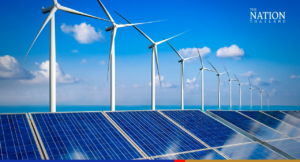 Exploring the increase in demand for renewable energy in Thailand
Exploring the increase in demand for renewable energy in Thailand
Thailand, known for its picturesque landscapes and rich cultural heritage, is now making headlines for its ambitious strides towards clean energy. The country is experiencing a surge in demand for clean energy, driven by a combination of government initiatives, increasing environmental awareness, and technological advancements. This trend is reshaping Thailand’s energy market and offering a glimpse into the future of the country’s energy landscape.
The Thai government has been instrumental in promoting clean energy. Recognizing the environmental and economic benefits of renewable energy, the government has set a target to increase the share of renewable energy in total energy consumption to 30% by 2036. This ambitious goal has spurred a wave of investments in clean energy projects, ranging from solar and wind farms to bioenergy and hydropower plants.
The government’s push for clean energy is complemented by a growing environmental consciousness among the Thai population. More and more Thais are recognizing the detrimental effects of fossil fuels on the environment and public health. This awareness is driving demand for clean energy solutions, from solar panels for homes to electric vehicles.
Technological advancements are also playing a crucial role in the clean energy boom in Thailand. The cost of renewable energy technologies has been falling rapidly, making them increasingly competitive with traditional energy sources. For instance, the cost of solar photovoltaic technology has dropped by more than 80% over the past decade. This trend, coupled with innovations in energy storage and smart grid technologies, is making clean energy more accessible and affordable for Thai consumers and businesses.
The growing demand for clean energy in Thailand is reshaping the country’s energy market. Traditional energy companies are diversifying their portfolios to include renewable energy sources, while new players are entering the market with innovative clean energy solutions. This shift is creating a dynamic and competitive market environment, fostering innovation and driving down costs.
Looking ahead, the clean energy trend in Thailand is expected to continue, driven by ongoing government support, increasing environmental awareness, and technological advancements. According to market projections, Thailand’s renewable energy capacity is expected to more than double by 2036, reaching over 40 gigawatts. This growth will be led by solar and wind energy, which are projected to account for over half of the country’s renewable energy capacity.
However, the transition to clean energy in Thailand is not without challenges. The country’s energy infrastructure needs significant upgrades to accommodate the increasing share of renewable energy. Moreover, regulatory and policy frameworks need to be adapted to support the growth of the clean energy sector.
Despite these challenges, the future of clean energy in Thailand looks promising. The country is demonstrating that it is possible to balance economic growth with environmental sustainability. As Thailand continues its journey towards a cleaner and greener energy future, it serves as an inspiring example for other countries in the region and beyond.
In conclusion, the surge in demand for clean energy in Thailand is a testament to the country’s commitment to sustainable development. It is a trend that is reshaping the country’s energy market and offering a glimpse into the future of its energy landscape. With continued government support, increasing environmental awareness, and technological advancements, the clean energy sector in Thailand is poised for significant growth in the coming years.
Source: https://www.evwind.es/2023/08/13/exploring-the-increase-in-demand-for-renewable-energy-in-thailand/93451


